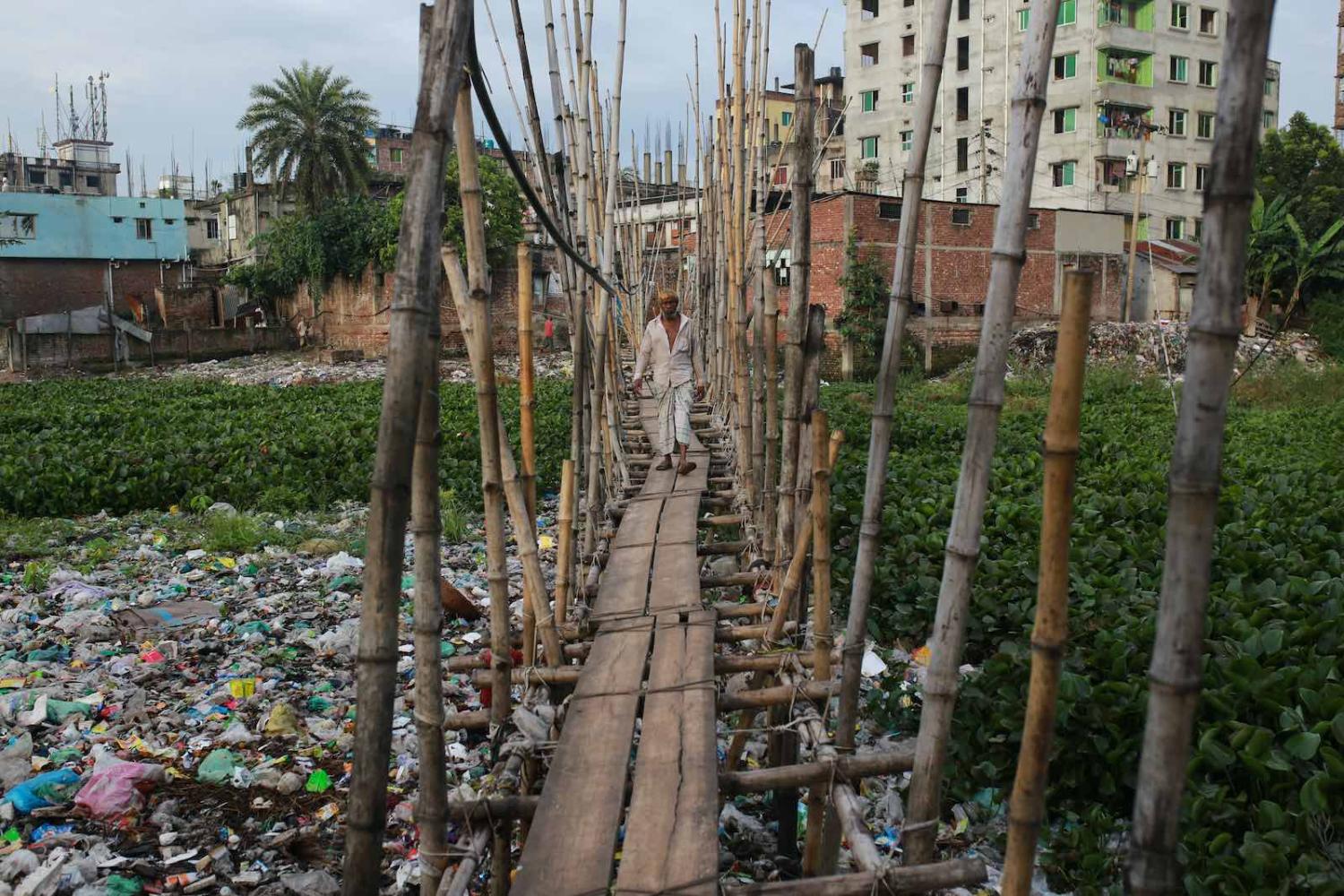Recently in a tweet, Indian opposition leader Rahul Gandhi complained that Prime Minister Narendra Modi “has destroyed the web of relationships that the Congress built and nurtured over several decades”. He then added rather vaguely that “living in a neighbourhood with no friends is dangerous”. In support of his claim, he posted a screen shot of the headline of an Economist article. The headline ran, “As Bangladesh’s relations with India weaken, ties with China strengthen”.
Not wanting to miss a good opportunity to belittle his rival, Gandhi was careful not to include the subheading of the article: “But the government [of Bangladesh] is keen to string both Asian giants along.” Indeed, the point about Bangladesh’s “balancing act” between India and China is the key premise of the Economist article. But this was seemingly lost on the 40,000 who gave it likes, and the more than 11,000 who retweeted his alarmist message.
Mr Modi has destroyed the web of relationships that the Congress built and nurtured over several decades.
— Rahul Gandhi (@RahulGandhi) September 23, 2020
Living in a neighbourhood with no friends is dangerous. pic.twitter.com/OxGzzHoEYb
Gandhi was not alone. “India bids to head off China in Bangladesh”, “Bangladesh signals shift towards China“ or “China takes Bangladesh into its embrace now as Delhi-Dhaka ties go downhill“ are but three of the many news reports and analyses underlining the same message.
The claims are not entirely without justification. In 2016, China and Bangladesh signed MoUs valued at $24 billion for Bangladesh. China has already “invested $10 billion in in power and infrastructure projects” in Bangladesh, and it is the largest arms exporter to the country. And as the Economist observed, China is now the number-one source of foreign direct investment in Bangladesh.
Supporters of the “Bangladesh is shifting to China” theory also point out that Bangladesh recently sought US$1 billion from China to better manage the water of the Teesta river. The Teesta runs from India into Bangladesh, and the sharing of its water has been a contentious issue for many years.
While these points are important, the problem with such analysis is, as recently pointed out, it downplays the fact that Bangladesh is fully capable of acting in its own self-interest. It is an independent country, and while perhaps weak in comparison to India and China, it still has the third most powerful military in South Asia, a resilient economy which is projected to recover quickly after Covid-19, and it is ruled by a smart government which even after a rigged election, a persistent record of human rights abuses and suppression of opposition, remains friendly with the great powers.
The point to underline is that the current government does not downplay the value of India’s friendship even in its relations with China, and it is not so naive as to underappreciate China.
One key to the strength of this tripartite relationship is geography and geopolitics. India and Bangladesh share one of the largest land borders in the world. Bangladesh is practically surrounded by India, while India’s communication with its own northeast is much assisted by transport across Bangladeshi territory. For India, Bangladesh is a country that it must have as a friend, not a foe, and vice versa for Bangladesh.
The real worry for the country is the Rohingya refugee crisis. The million-strong refugee influx could pose a serious threat to its future stability and internal security.
But that same logic doesn’t hold for China.
Bangladesh occupies an unfortunate piece of geography, in that it offers very little from a strategic point of view. If China were to spend large sums of money and goodwill on unseating India in Bangladesh, it would achieve very little except to antagonise India. China is already a friend of Myanmar, meaning access to gas fields in the Bay of Bengal and possibly a Belt and Road connection from southern China into the Bay, bypassing all of Southeast Asia. China already has a port in Sri Lanka. And it is investing heavily in Pakistan. If it is friendly votes in UN that Beijing wants, it is much cheaper to “buy” friendship in Micronesia or the Caribbean – which it already is doing.
Pakistan is more interesting for China. It is strategically positioned on the Arabian Sea, close to Hormuz, and it borders Iran, Afghanistan and India, as well as China. Pakistan is a lethal source of jihadist militancy and crucial to watch for spillover into Xinjiang province. Pakistan is also a player in Arab and Muslim politics. And it is a nuclear power.
Bangladesh is none of those things.
Bangladesh has too much to lose by taking China’s side in this great power game. It would antagonise the US, India, Australia and Japan in their recently reconstituted “Quad” – a consequence that would hurt Bangladesh economically and politically, since the US and the EU are major destinations for Bangladesh’s billion-dollar garment export industry, while Japan and Australia have supported Bangladesh’s infrastructure and social development. At the same time, Bangladesh would not want to antagonise China.
The best bet for Bangladesh, then, is to keep playing the balancing act between these big powers. Meanwhile, however, the real worry for the country is the Rohingya refugee crisis. The million-strong refugee influx could pose a serious threat to its future stability and internal security. Evidence now suggests that some of these great powers are using the Rohingya refugee crisis to put Bangladesh under pressure and placate Myanmar. Geo-strategically, even for friends of Bangladesh, Myanmar is far more interesting.

